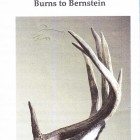Actéon 2015Ayrshire Opera Experience
Read more about the opera Actéon
An excellent new musical enterprise, Ayrshire Opera Experience, took off at Ayr's charmingly intimate Gaiety Theatre. This is the ideal venue for small-scale opera, and in this case saw a rare performance of Actéon - an early French work composed on a similar scale to Purcell's Dido and Aeneas. It had only once before been given in Scotland. A further novelty is for the piece to be translated into Scots - French drama of that period, by Molière, always works well in Scots, so it is sensible to try this option. There is also a neat tie-in with the local bard. A second performance followed at Lamlash on Arran.
This masterpiece of the baroque era was billed as Actéon meets Tam O'Shanter, and the evening began with Marc-Antoine Charpentier's chamber opera Actéon. Merging Scots language with French Baroque Opera and Greek mythology, it retells the story of a young hunter who, like Tam O'Shanter in the Burns poem, stumbles across an illicit vision - though his punishment is rather more severe than Tam's. Actaeon, out hunting, finds the goddess Diana and her attendant nymphs bathing. In revenge she turns him into a stag so that he is torn to pieces by his own hounds.
This tour follows on from a residential course held in August 2014 reported here. A feature of the production is a community chorus, drawn from all ages and backgrounds. They were one of the successes of the evening - twenty well-schooled voices, with no previous experience in opera, singing confidently in what really is a specialized style of music.
That music by Marc-Antoine Charpentier is kept exactly as written. The words are in a translation by Chris Waddell. It is performed with harpsichord (played by musical director Stephen Cowan) and three strings. two violins and a cello. The score is written in three parts, so it works well with just those instruments.
The soloists are led by the two who have been the driving force behind the project. The Ayrshire tenor David Douglas has an excellent lyrical high tenor, which he has found particularly suited to the music of the French Baroque, and this performance showed just why. In his role as director, his handling of the mood changes from jolly hunting scene through amusement at his discovery leading to incomprehension and terror as he observes his physical changes was very skilfully depicted.
Siobhan McAuley has a rich-toned and smoothly produced soprano, which she also used to great effect in projecting the Scots translation. In her second role, as vocal coach, she had trained the choir of inexperienced amateurs to generate a beautifully mellifluous sound. The other three soloists, all sopranos, had completely different voices, thus avoiding any sense of possible monotony or confusion between the characters.
The production was extremely simple and stylised in an entirely appropriate way using a basic garden setting and seventeenth century costume - aristocratic for Diana and Juno, slightly posh for the nymphs, and peasant for everyone else, all very simply suggested.
After the interval, a less formal entertainment was provided, in the form of a concert entitled 'Burns to Bernstein'. This was an entertaining sequence of songs (starting with Burns, Purcell and Handel) and arias, as well as show songs. Definite highlights included David Douglas's own performances of 'My love is like a red, red rose', set by Toby Hunt and a later example of French operatic music for high tenor, in the Serenade from Lalo's Roi d'Ys. The letter duet from Figaro (Siobhan McAuley and Karen McKluskey from the chorus) also worked well. The show numbers ranged from the soulful 'If I loved you' from Alexandra Shrinivas to Colleen Nicoll's extrovert 'Glitter and be Gay'. A real show-stopper came from Aimee Toshney in 'Tesori's 'Girl in 14B'. Altogether a most enjoyable and varied programme.
